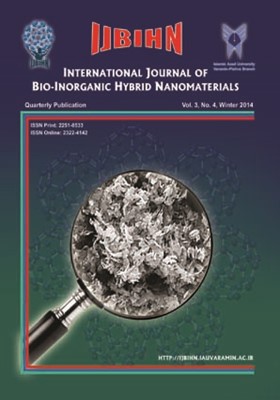-
-
List of Articles
-
Open Access Article
1 - In vivo Effects of CdSe Injection on Embryonic Development of Reproductive System
-
Open Access Article
2 - Synthesis of Iron Oxide Nanoparticles using Borohydride Reduction
-
Open Access Article
3 - Nano-bio Hybrid Material Based on Bacteriorhodopsin and ZnO for Bioelectronics Applications
-
Open Access Article
4 - Influences of Co2+ & Er3+ Co-doping on the Structural and Physical Properties of ZnO Nanocrystals Synthesized by Hydrothermal Route
-
Open Access Article
5 - Significance of Chemical Decomposition of Chloroethyl Phenyl Sulfide (CEPS) using Zinc-Cadmium Oxide (ZnO-CdO) Nanocomposite
-
Open Access Article
6 - A Three-Component 1,3-Dipolar Cycloaddition Reaction of Azomethine Ylide for Synthesis of New Bis-spiro-oxindolo(pyrrolizidines/pyrrolidines) Derivatives
-
Open Access Article
7 - Calcination Treated of Mixed Spinel ZnFe2O4 Synthesized by Combustion Method
-
Open Access Article
8 - Polyelectrolyte-Modified Microemulsions: Formation of Nanoparticles in the Presence of Anionic and Cationic Polyelectrolyte
-
The rights to this website are owned by the Raimag Press Management System.
Copyright © 2021-2025







